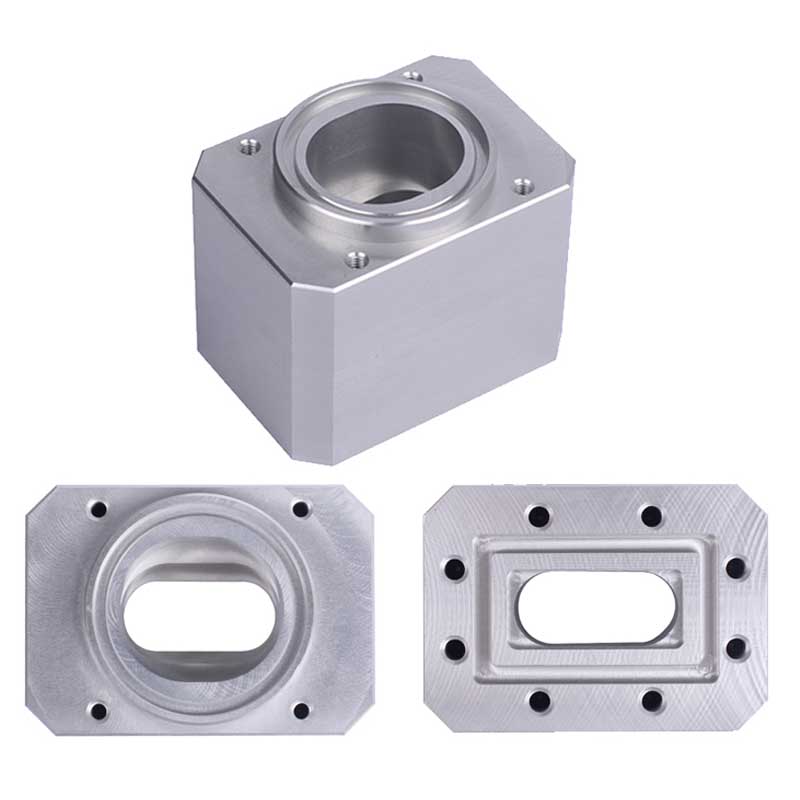
1. Use sharp blades to reduce the cutting
force of CNC milling machines. Machine blades are divided into coated and
non-coated blades. Uncoated blades are usually sharper than coated blades,
because if the blades are to be coated, they must be passivated (ER), because
of the sharp edges The mouth will affect the bond strength of the coating at
the cutting edge.
2. When cutting deep, using a small tip
radius can undoubtedly reduce the cutting force. Especially radial cutting
force, and radial cutting force is the main factor that causes the vibration of
slender bar tools or workpieces. Whether it is bumping or milling. At the same
cutting depth, the radius of the tool nose arc is larger. The slender shank has
a greater tendency to vibrate.
3. When the cutting depth can be selected,
it should be avoided that the cutting depth is equal to the arc radius of the
tool tip
4. For the key cutting of the sharp knife
of the slender shank, or the external turning of the slender shaft, the use of
a tool with a 90 ° main declination is conducive to vibration reduction.
Whether it is an external turning tool for turning a slender shaft or a key
hole in a slender shank, it is always 90 °, and the radial cutting force
generated by the tool with a main declination angle is small. At the same time,
the axial force generated by the blade edge is large.
5. For milling cutters with slender rods,
round-blade milling cutters are good for damping vibrations. The milling cutter
is opposite to the agitating cutter. The closer the main declination angle is
to 90 °, the greater the radial cutting force and the greater the vibration of
the shank. Therefore, in the face milling process of the deep hole cavity of
the mold, the CNC milling machine usually chooses a 45 ° main declination milling
cutter if the cutting depth is less than 1mm. Round blade milling cutters or
ball cutters are often used.
6. When the CNC milling machine uses a
slender rod end mill to mill a deep cavity, plunge milling is often used.
Plunge milling is the axial feed of the tool like a drill. When milling a deep
cavity. Usually the long rod's cantilever is greater than 3 times the diameter
of the shank. We recommend the use of axial feed. But the radial cutting edge
of the edge width of the end mill blade. The tool supplier has technical
information to prove that the cutter has a large width during plunge milling.
7. The cause of vibration in the milling of
thin-walled workpieces comes entirely from the workpieces. Such workpieces are
called box or bowl parts. Because the vibration comes from the workpiece
itself. So when dealing with the milling of such parts, it is mainly to improve
the clamping of the workpiece.
8. When boring in the inner hole, the
smaller the blade edge angle, the better. In this way, the auxiliary main
declination angle is large, and the contact area between the auxiliary cutting
edge and the processed surface is small, and the vibration is difficult to turn
into vibration.
9. If the face milling cutter adopts sparse
tooth unequal distance milling cutter, the milling vibration can be reduced.
Here "tooth" refers to the blade. Face milling cutters of the same
diameter (eg 100mm). If their three cutting elements are equal, then the
5-blade cutterhead must produce 50% less milling force than the 10-blade
cutterhead.
10. Use blades with positive rake angle and
large rake angle. And equipped with brittle chip breaker. The cutting wedge
angle of such inserts in filing or milling is small, and the cutting is of
course light.
We are a professional CNC milling company, providing CNC milling services and milling services. Consult us to learn more.